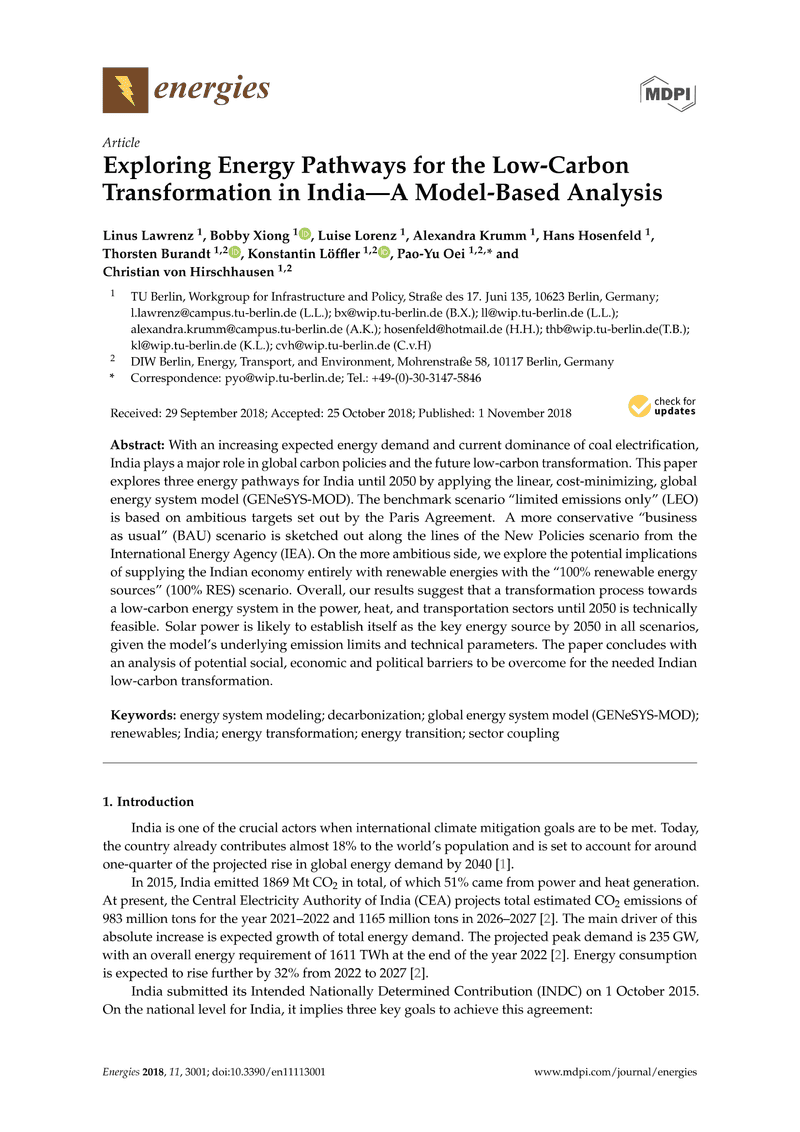Exploring Energy Pathways for the Low-Carbon Transformation in India

With an increasing expected energy demand and current dominance of coal electrification, India plays a major role in global carbon policies and the future low-carbon transformation. This paper explores three energy pathways for India until 2050 by applying the linear, cost-minimizing, global energy system model (GENeSYS-MOD). The benchmark scenario “limited emissions only” (LEO) is based on ambitious targets set out by the Paris Agreement. A more conservative “business as usual” (BAU) scenario is sketched out along the lines of the New Policies scenario from the International Energy Agency (IEA). On the more ambitious side, we explore the potential implications of supplying the Indian economy entirely with renewable energies with the “100% renewable energy sources” (100% RES) scenario. Overall, our results suggest that a transformation process towards a low-carbon energy system in the power, heat, and transportation sectors until 2050 is technically feasible. Solar power is likely to establish itself as the key energy source by 2050 in all scenarios, given the model’s underlying emission limits and technical parameters. The paper concludes with an analysis of potential social, economic and political barriers to be overcome for the needed Indian low-carbon transformation.